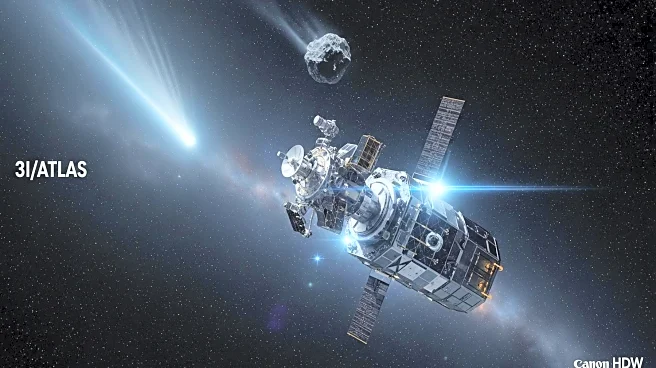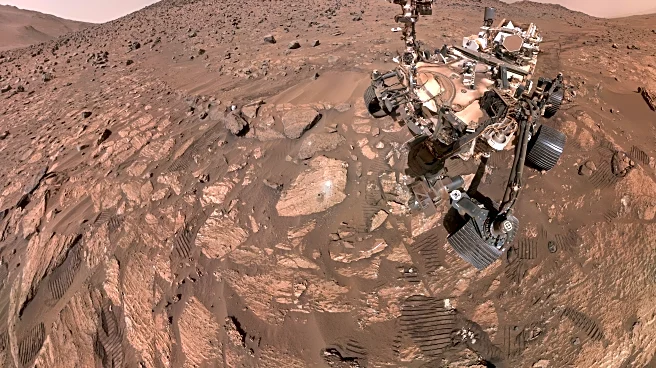What is the story about?
What's Happening?
Scientists at the Southwest Research Institute (SWRI) have published a study indicating that current technology could enable spacecraft flybys of interstellar objects passing through the solar system. The study highlights the potential for missions to intercept objects like the interstellar comet 3I/ATLAS, which is on a hyperbolic trajectory. While achieving a stable orbit around these fast-moving objects is not feasible, flybys could provide valuable insights into their composition and formation processes. SWRI has developed software to model interstellar objects and calculate the energy required for spacecraft approaches, suggesting that such missions could be resource-efficient compared to other solar system missions.
Why It's Important?
The ability to conduct flybys of interstellar objects could significantly advance scientific understanding of these rare visitors. Interstellar objects, such as 3I/ATLAS, offer unique opportunities to study materials and processes from beyond our solar system. Successful missions could reveal information about the composition and formation of solid bodies in other star systems, potentially leading to groundbreaking discoveries. As interstellar objects pass within Earth's orbital range annually, the study suggests that early planning and technological advancements could facilitate future exploration, enhancing knowledge of the universe.
What's Next?
SWRI advocates for early planning and development of missions to explore interstellar comets. While current proposals lack funding from NASA or other space agencies, advancements in observational technologies, such as the Vera C. Rubin Observatory, are expected to increase the identification of interstellar objects. This could lead to more frequent missions and a deeper understanding of these objects. SWRI's study points to a future where exploration of interstellar visitors becomes more common, potentially transforming scientific perspectives on the solar system and beyond.
AI Generated Content
Do you find this article useful?















